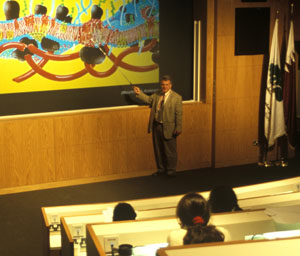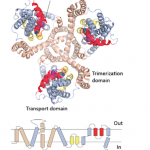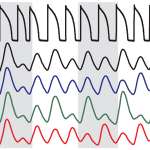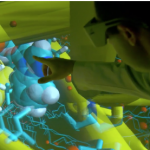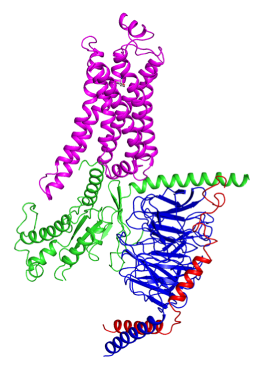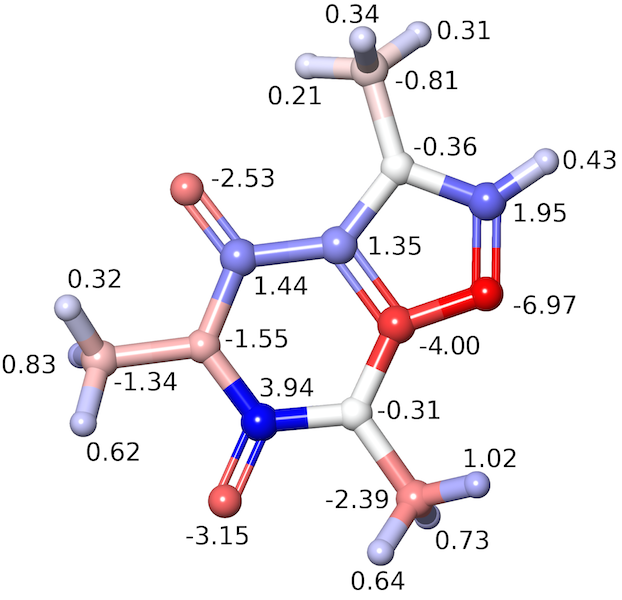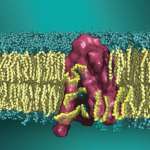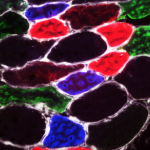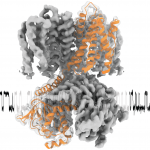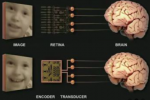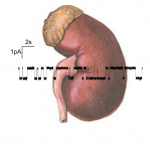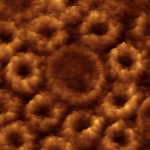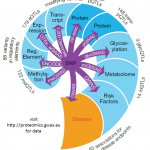Graduate Education
Weill Cornell Graduate School of Medical Sciences (WCGSMS)
For more than a half-century, WCGS has focused on preparing its students for careers in the biomedical sciences. The Graduate School faculty today numbers more than 250, and more than 1,000 students have earned Cornell University PhDs from the school.
Physiology, Biophysics and Systems Biology (PBSB)
The PBSB graduate program website includes exciting information about the research and academic activities of the Faculty engaged in world class research aiming to understand the functional mechanisms in the human body, in health and in disease.
Tri-I PhD Program in Computational Biology and Medicine (TPCBM)
The Tri-I PhD Program in Computational Biology and Medicine (CBM) was established in 2003 to provide a unique training opportunity that takes advantage of the exceptional educational and research resources of Cornell University in Ithaca, its Medical College in NYC (Weill Cornell Medical College), and Memorial Sloan Kettering Cancer Center. It is our belief that the development of such a cadre of computational biologists, trained in the laboratories of exceptional program faculty from all three campuses, will foster discovery in frontiers of basic biological and biomedical sciences.
Tri-Institutional PhD Program in Chemical Biology (TPCB)
The Tri-Institutional PhD Program in Chemical Biology was established in 2001 as one of the first graduate programs in the world to focus on research and training at the interface of chemistry and biology. The program is a collaborative offering of three premier New York City institutions, Weill Cornell Medical College, The Rockefeller University, and the Memorial Sloan Kettering Cancer Center. Located adjacent to one another in the heart of Manhattan’s Upper East Side, these three institutions combine to create a unique university environment and provide unparalleled scientific opportunities to the next generation of leaders in chemical biology.
Accardi Lab
Work in my lab is aimed at uncovering the molecular and structural underpinnings regulating the movement of charged ions across cellular membranes. This process results in the electrical currents underlying scores of fundamental physiological processes such as the neuronal action potential, muscle contraction, insulin secretion and signal transduction. Two classes of membrane proteins mediate transmembrane ion movement through thermodynamically opposing…
Aksay Lab
The neural system studied by the lab is the integrator for control of eye position. Neurons essential for function, located either in the brainstem or cerebellum, are examined in vivo during normal behavior. The experimental preparation used is the developing zebrafish, allowing a combination of optical, genetic, and electrophysiological tools. Some examples of methods brought to bear are…
Andersen Lab
The Andersen laboratory explores on the energetic coupling between membrane proteins and their host bilayer using experimental, computational and theoretical methods. A major focus of the current studies is how biologically active molecules alter the physical/elastic properties of the lipid bilayer, which in turn will alter membrane protein and cell function. Indiscriminate changes in protein function may lead to serious…
Boudker Lab
Our main focus over the last few years has been on glutamate transporters, although we study other proteins as well. In the central nervous system, glutamate transporters are responsible for the uptake of the neurotransmitter glutamate following rounds synaptic signaling. Rapid clearance of the transmitter is essential not only to allow for repeated rounds of neurotransmission but also to prevent…
Christini Lab
Sudden cardiac death, primarily caused by ventricular arrhythmias, is a major public health problem – it is one of the leading causes of mortality, resulting in more than 350,000 annual deaths in the United States alone. Our group’s efforts are focused on improving our understanding of, and therapies for, cardiac arrhythmias. We primarily investigate biophysical mechanisms of electrophysiological instabilities and…
Elemento Lab
The Elemento lab combines Big Data analytics with experimentation to develop entirely new ways to help prevent, diagnose, understand, treat and ultimately cure cancer. Our research involves routine use of ultrafast DNA sequencing, proteomics, high-performance computing, mathematical modeling, and artificial intelligence/machine learning.
Hajirasouliha Lab
We are a computational science oriented group, affiliated with the institute of precision medicine and the institute of computational biomedicine. We are passionate about developing new algorithms and applications of computational methods to genomics.
Huang Lab
Our current research includes the structural biological studies to understand the mechanisms by which G-protein-coupled receptors activate G-proteins, and translational cancer biology. We are developing small-molecule compounds to block tumor cell migration, invasion and metastasis, as well as to reinvigorate anti-tumor immune response. We also investigate the physiological functions of G-proteins in blood vessel formation and bone homeostasis.
Huggins Lab
Our research is focused on the development of novel computational methods to solve problems in the field of medicine. We use statistical mechanical methods such as free-energy perturbation and inhomogeneous fluid solvation theory to understand and predict the thermodynamics of binding, with specific application to molecular design tools for developing effective new therapeutics. On the theoretical side, we are interested…
Khelashvili Lab
The overall goal of the research projects in the lab is to uncover dynamic mechanisms in fundamental biological processes of signal transduction by cell surface proteins in the categories of receptors (such as G protein-coupled receptors, GPCRs), transporters in the family of Neurotransmitter:Sodium-Symporters (NSS), and lipid scramblases. Special emphasis is on understanding how the spatial organization and function of these…
Khurana Lab
The research interests of the lab fall under the broad categories of genomics, computational biology and systems biology. We participate in multiple international genomics consortia and collaborate with scientists at Weill Cornell to develop novel approaches to understand the role of sequence variants in human disease. The decreasing costs of genome sequencing are leading to a growing repertoire of personal…
Krumsiek Lab
We develop innovative systems biological data analysis approaches, with a special focus on metabolomics data from human samples. By combining large datasets from modern omics profiling techniques with advanced statistics and pathway analysis methods, we attempt to unlock the true potential of such big datasets. Our working hypothesis is that only analyzing omics datasets at the level of entire molecular pathways will provide enough statistical power and biological insights to generate novel targets…
Mason Lab
Our laboratory develops and deploys computational and experimental methodologies to identify the functional genetic elements of the human genome and metagenome. To do this, we perform research in three principal areas: (1) molecular profiling in patients with extreme phenotypes, including brain malformations, aggressive cancers, and astronauts, (2) creating new biochemical and computational techniques in DNA/RNA sequencing and DNA/RNA base modifications, and (3) the development of bioinformatics models for systems…
Mendias Lab
Our lab is part of Weill Cornell and the Hospital for Special Surgery, which allows us to conduct cutting edge basic science research in musculoskeletal biology and then translate these findings to patients in the clinic. Our trainees have come from a variety of backgrounds, and include graduate students, postdoctoral fellows, and clinical residents and fellows that work together in…
Nimigean Lab
Our lab is located in the C.V. Starr Laboratory of Molecular Neuropharmacology and features an international environment. Currently, a team of five postdoctoral fellows from different backgrounds, joined by rotating undergraduate and graduate students, is working on projects related to voltage-gating, ligand-gating and structure-function relationships in different ion channel proteins. Motivated graduate students are welcome to join our group.
Nirenberg Lab
The theme of our research is to advance basic understanding of computational neuroscience, and, in parallel, use what we learn to address practical problems that improve quality of life.
Palmer Lab
The Palmer lab studies the mechanisms of epithelial ion transport and its regulation by hormones and other factors. Part of this research is at the molecular level. Here we identify ion channel proteins that mediate the movement of Na+and K+into or out of epithelial cells, and explore the aspects of those proteins that confer the properties of ion conduction and…
Scheuring Lab
We perform atomic force microscopy (AFM) based research of biological samples, with a particular interest in membrane phenomena. Our data reports about the structure, dynamics, diffusion, interaction, mechanics and supramolecular assembly of membrane proteins and other membrane constituents.
Silver Lab
Our lab is focused on understanding the contributions of mast cells to a variety of diseases including bronchopulmonary dysplasia, lung and kidney fibrosis and abnormal wound healing. Mechanistically we study how mast cell mediators and exosomes communicate with cells found in close proximity, like fibroblasts. Taking a multifactorial approach we perform in vivo and in vitro experiments using murine models of…
Suhre Lab
My current research efforts are to realize the true potential of the many recent discoveries I made in the field of metabolomics and genomics, by now translating them to clinical and biomedical application. For this purpose I am involved in setting up and supporting industry-level metabolomics and proteomics facilities in Qatar, conducting clinical studies with metabolomics read-outs, developing cell-culture based…
Weinstein Lab
The Weinstein lab studies complex systems in physiology with methods of molecular and computational biophysics, bioinformatics and mathematical models. The work addresses structural and dynamic mechanisms in fundamental biological processes such as signal transduction, neuronal signaling and regulation of cell growth mechanisms, and the expression of these processes in the physiological functions of tissues and organs.



